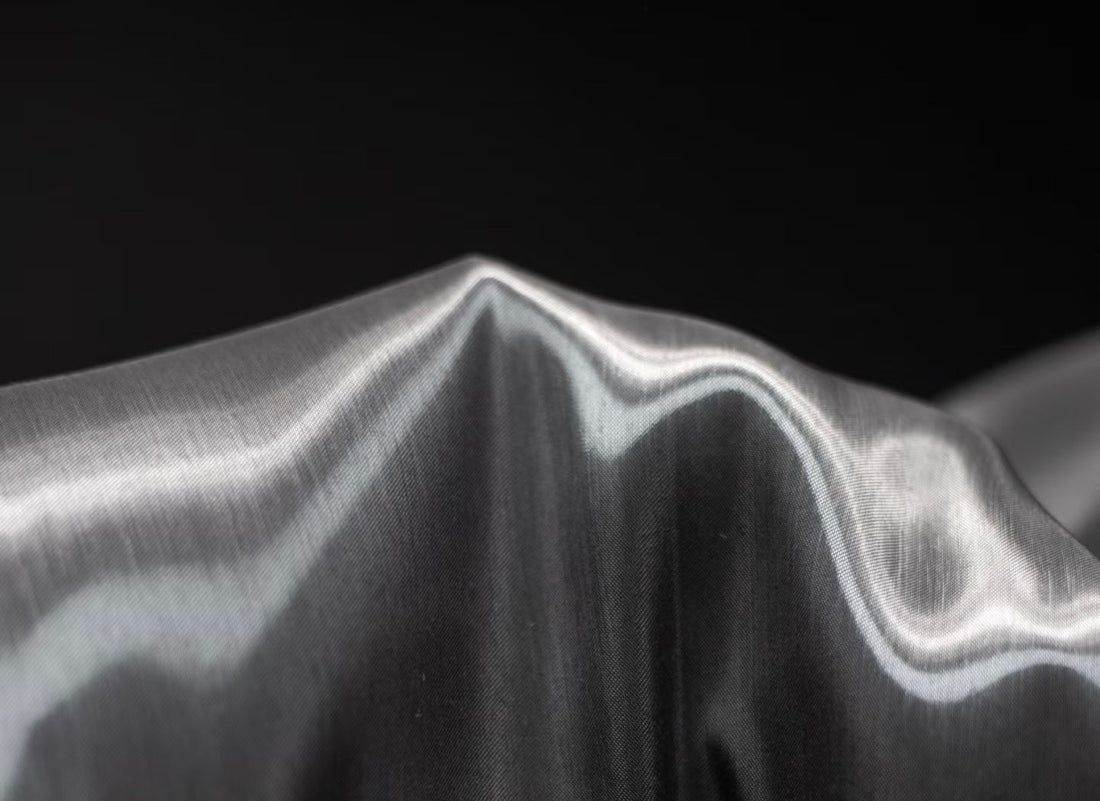
The Best Lame Fabric Guide: Fashion’s Top Shimmering Textile
What Is Lame Fabric?
Lame fabric (pronounced lah-MAY) is a high-shine textile made by weaving or knitting metallic fibers into a base of traditional yarns like polyester, nylon, or silk. Known for its brilliant surface that reflects light dramatically, lame is widely used in eveningwear, stage costumes, accessories, and avant-garde fashion. Whether you’re designing for performance or seeking a bold look, lame fabric delivers instant glamor and theatricality.
How Is Lame Fabric Made?
Lame fabric is produced by weaving or knitting thin metallic ribbons directly into the textile structure. These ribbons are often made from aluminum foil laminated with polyester, Mylar film strips, or metal-coated plastic fibers. By combining these reflective materials with soft yarns, manufacturers create a fabric that merges flexibility with intense brilliance. Higher-quality lame is frequently finished with protective coatings to prevent flaking or oxidation, ensuring both durability and visual impact.

Why Does Lame Fabric Shine?
The luminous surface of lame comes from its metallic composition, which reflects light at sharp angles. Unlike satin or silk that create a diffused glow, lame produces a liquid-metal effect — shimmering dynamically as the wearer moves. This eye-catching property makes it a top choice for stages, fashion runways, and festive occasions.
Lame Fabric vs. Other Shiny Textiles
Among all shimmering materials, lame stands out for its full-surface reflectivity and structural brilliance. In contrast, satin offers a smooth, soft luster ideal for lingerie and gowns; sequin fabrics sparkle in localized flashes but tend to be stiff and less durable; foil prints rely on surface coatings that deliver shine but may lack depth and longevity. Lame strikes a unique balance — combining a visually intense metallic glow with the flexibility to drape and move — making it a favorite for fashion-forward and theatrical applications.
| Fabric Type | Shine Style | Durability | Flexibility | Common Uses |
|---|---|---|---|---|
| Lame | Bright, metallic | Moderate | Medium | Costumes, partywear |
| Satin | Smooth, soft glow | High | High | Lingerie, gowns |
| Sequin | Spot-reflective, flashy | Low | Low | Dancewear, accessories |
| Foil Print | Laminated shimmer | Low | Medium | Graphic tees, performancewear |
Lame in Fashion History
Lame has made bold appearances throughout fashion history:
- In the 1920s, it defined flapper dresses and Hollywood glamour.
- In the 1970s, it became synonymous with disco culture and Studio 54.
- Modern pop icons like Lady Gaga, David Bowie, and Beyoncé have all worn show-stopping lame costumes.
Whether in vintage elegance or futuristic fashion, lame continues to represent boldness, performance, and innovation.

Is Lame Fabric Safe?
Generally yes — lame is safe for external use. However, cheaper versions can feel stiff or scratchy, and may not be suitable for prolonged skin contact. If you're wearing lame directly on the skin, opt for lined garments or add a lightweight cotton layer underneath to avoid irritation.
Does It Flake or Peel?
Lower-quality lame fabrics can shed metallic particles, flake, or even peel under stress or frequent use. Signs of poor quality include visible cracking, loose foil on the surface, and glittery residue on your fingers. Investing in higher-grade lame with coated protection is essential for durability, especially in costumes or frequently worn garments.
How to Wash and Care for Lame Fabric
Lame is delicate and requires special care:
- Hand wash only in cold water using a mild detergent
- Do not wring, rub, or twist
- Lay flat to dry away from sunlight
- Never tumble dry or dry clean
- If ironing is needed, place a cloth on top and use a low-heat setting
Machine washing or exposing lame to heat will damage the metallic surface and compromise its shine.
DIY Ideas: How to Use Lame in Creative Projects
Lame isn’t just for couture or stagewear — it’s great for beginners too. Some fun, beginner-friendly uses include:
- Sparkling party clutches and coin purses
- Holiday decor like tree ornaments and banners
- DIY festival headbands or superhero-style capes
- Home accents like pillow borders and table runners
Just remember: lame is better for highlighting or decorating, not for structural seams or high-stress zones.
Is Lame Eco-Friendly?
Unfortunately, most lame fabric is not sustainable. It’s typically made of petroleum-based metallic films and plastics, which:
- Aren’t biodegradable
- Are difficult to recycle
- May release microplastics during washing
However, some brands are experimenting with recycled polyester-based lame and more sustainable metallic alternatives. If sustainability matters, check the fiber content or supplier certifications carefully.
Does Lame Age or Crack Over Time?
Yes — over time, especially when exposed to heat or moisture, lame can:
- Crack along folded edges
- Peel where coatings weaken
- Stick to vinyl or rubber materials
Store lame fabrics flat or rolled, in cool, dry spaces, wrapped in tissue paper. Avoid direct contact with synthetic or rubbery materials, which may fuse with the surface during long-term storage.
Where to Buy Lame Fabric and Price Range
Lame fabric is available at:
- Fabric retailers like Joann, Mood Fabrics, and Fabric.com
- Dancewear and performance suppliers
- Online marketplaces like Etsy and Amazon
Typical prices range from $5–15 USD/yard for basic lame, and $20–50+ for designer or specialty versions. Once made into finished garments or accessories, these items often sell for 3–5× the raw material cost.
Tips and Warnings When Working with Lame
- Use lining in all clothing for comfort and longevity
- Avoid excessive pinning, pulling, or stretching
- Test adhesives or fusible interfacing on a swatch before full application
- Don’t store with PVC or rubber-based items to avoid surface fusion
If you’re designing for resale, check your country’s safety guidelines for metallic fiber content — especially for children’s items.
Final Thoughts: Is Lame Fabric Worth It?
Lame is the ultimate fabric for shine and spectacle — whether you’re designing a concert outfit, making a glam holiday look, or just want to experiment with metallic textures. Its bold presence and dynamic light reflection make it truly unforgettable. Just treat it with care, and it will stay luminous for many performances to come.
Looking for a breathable, simple base to pair with metallic outerwear? Try our lightweight Topology white tee — a clean canvas for any statement layer.
